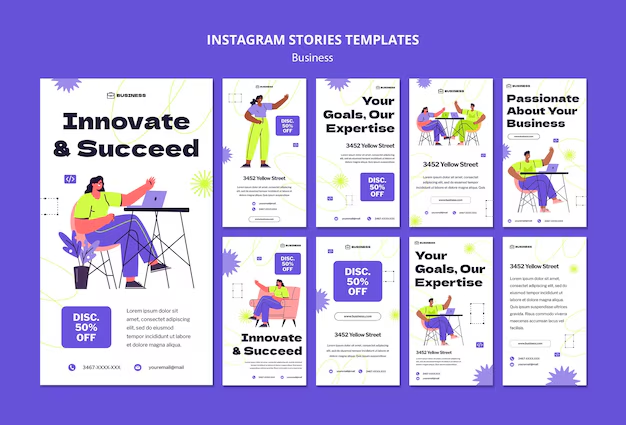The landscape of mobility is undergoing a dramatic transformation, heralding a new era where vehicles operate independently, redefining our interactions with transportation. This shift is not merely a trend but a profound change influenced by advancements in various fields, promising an easier and more efficient way to traverse our environments. As systems evolve, the potential for enhanced safety and convenience becomes increasingly tangible.
At the heart of this evolution lies a commitment to harnessing cutting-edge approaches that merge artificial intelligence with vehicle dynamics. The fusion of these elements results in an orchestra of precision and responsiveness that can adapt to diverse conditions and challenges on the road. With emerging innovations, the possibilities for development are vast, sparking interest across industries and igniting imagination for what lies ahead.
As we step into this uncharted realm, collaboration between engineers, designers, and technologists is essential. Synergistic efforts are paving the way for smarter, more capable units that promise to reshape urban mobility and individual travel experiences. By embracing this shift, we open doors to a landscape where efficiency and sustainability thrive, ensuring that vehicles not only meet today’s demands but also anticipate the needs of tomorrow.
Overview of Polaris PSA Technology
This section explores an innovative approach designed to enhance autonomous vehicle capabilities. The groundwork of this framework aims to transform how vehicles navigate, adapt, and respond to their surroundings, thus ensuring a seamless driving experience. The integration of advanced systems paves the way for smarter and safer transportation solutions, fulfilling the ever-growing demand for efficient mobility.
Core Components
At the heart of this initiative lies a combination of predictive algorithms and robust sensors. These elements work in harmony to gather data from the external environment and analyze it in real-time. This allows the vehicle to make informed decisions based on various scenarios encountered during operations.
Key Features
| Feature | Description |
|---|---|
| Adaptive Navigation | Utilizes real-time data to alter routes for optimal travel efficiency. |
| Multi-Sensor Fusion | Integrates data from various sensors to enhance situational awareness. |
| Predictive Analytics | Employs algorithms to forecast potential obstacles and adjust accordingly. |
| User-Centric Interface | Enables easy interaction for passengers, enhancing overall experience. |
Impact on Autonomous Vehicle Industry
The emergence of innovative approaches has significantly altered the landscape of the driverless vehicle sector. These advancements not only enhance efficiency but also shift public perception and regulatory frameworks. As new methodologies are implemented, the interaction between consumers, businesses, and governing bodies is evolving, setting the stage for a transformative era in transportation.
Shifts in Market Dynamics
As emerging strategies gain traction, the competitive environment is becoming increasingly vibrant. Established corporations are now compelled to adapt, as agile newcomers introduce novel concepts and solutions that challenge the status quo. This dynamic not only stimulates innovation but also encourages collaboration among industry players, and results in a more interconnected marketplace.
Safety and Regulation
With the advancement of autonomous vehicles, safety standards and regulations are undergoing rigorous evaluation. The integration of sophisticated systems requires a rethinking of existing legislative frameworks to address the unique challenges presented by these vehicles. As a result, stakeholders are pushing for more comprehensive guidelines that ensure both operation efficiency and user safety.
| Aspect | Impact |
|---|---|
| Market Competition | Increased innovation and new entrants |
| Consumer Trust | Enhanced confidence through improved safety measures |
| Regulatory Framework | Adaptation of laws to embrace new realities |
| Collaboration | Partnerships between tech companies and automakers |
Key Innovations Driving Self-Driving Solutions
Recent advancements in automated vehicle systems illustrate a remarkable shift in how mobility is approached. These groundbreaking developments not only enhance safety but also redefine user experiences and efficiency on roads. By integrating complex algorithms, cutting-edge sensors, and artificial intelligence, the evolution of transportation is heading towards a new horizon.
Cutting-Edge Sensor Technologies
One of the most crucial elements contributing to advancements in autonomous mobility is the integration of sophisticated sensor technologies. Lidar, radar, and cameras work in unison to create a detailed understanding of the vehicle’s surroundings. This fusion of data allows for real-time decision-making that can react to various environmental conditions, ensuring safer navigation.
Artificial Intelligence and Machine Learning
Another significant factor is the utilization of artificial intelligence and machine learning algorithms. These systems enable vehicles to learn from vast amounts of data, improving their ability to predict and respond to complex traffic patterns. As more data is gathered from diverse driving scenarios, the overall capability of automated systems enhances, making them more reliable and efficient.
Challenges in Implementing New Systems
Introducing innovative frameworks in any field presents various hurdles that stakeholders must navigate. These obstacles can stem from multiple sources, creating a complex environment where successful adoption becomes a challenging task. Addressing these issues is crucial to ensure seamless integration and functionality within existing infrastructures.
Some of the primary challenges faced include:
| Challenge | Description |
|---|---|
| Regulatory Compliance | Adhering to established laws and regulations can be cumbersome, often requiring significant adjustments to new systems. |
| Technological Integration | Incorporating new entities with legacy systems may lead to compatibility issues and increased complexity. |
| Public Acceptance | Gaining trust from users is essential, as skepticism about unfamiliar solutions can hinder widespread adoption. |
| Cost Management | Balancing the expenses associated with development, implementation, and maintenance poses a significant risk to budgeting. |
| Skill Gaps | Ensuring that personnel possess the necessary expertise to manage new implementations can be a daunting task. |
Overcoming these challenges requires collaboration, thorough planning, and a willingness to adapt to changing circumstances. Stakeholders must continually assess and refine their strategies to facilitate the successful integration of advanced systems.
Partnerships Enhancing Development Efforts
Collaborative initiatives between various organizations are pivotal to advancing innovation in modern transport solutions. These alliances foster a dynamic environment where knowledge, resources, and expertise can be shared, driving progress beyond what individual entities could achieve on their own.
Key Benefits of Collaborative Ventures
- Resource Pooling: By combining assets, partners can significantly reduce costs and improve efficiency in research and development activities.
- Diverse Expertise: Different organizations bring unique skills and perspectives, allowing for a more holistic approach to problem-solving.
- Accelerated Innovation: Working together often leads to quicker implementation of new ideas and solutions, boosting overall productivity.
- Market Reach Expansion: Partnerships can open new markets and customer bases, enhancing the impact of each partner’s offerings.
Examples of Strategic Collaborations
- Alliances with academic institutions for cutting-edge research and talent pipeline development.
- Joint ventures with tech startups to harness fresh ideas and agile methodologies.
- Collaborations with automotive manufacturers to integrate advanced systems into conventional models.
The synergy created through these partnerships is crucial in addressing complex challenges and unlocking new possibilities in transportation systems, paving the way for an innovative landscape.
Future Outlook for Self-Driving Vehicles
The upcoming landscape of autonomous transportation is poised to bring about transformative changes in mobility and urban planning. As innovations continue to emerge, a blend of advanced algorithms and sophisticated hardware promises to enhance safety, efficiency, and accessibility in everyday travel.
Predicted advancements in artificial intelligence will facilitate smoother interactions between vehicles and their environments, leading to improved decision-making capabilities. This evolution is expected to drive a significant reduction in road accidents, significantly elevating public confidence.
Moreover, as regulatory frameworks evolve, they will provide a clearer path for widespread adoption. Governments and organizations are starting to recognize the potential benefits, opening avenues for public acceptance and integration into existing infrastructures.
The increasing focus on sustainability will also play a pivotal role. Future mobility solutions are likely to prioritize eco-friendly options, addressing concerns about emissions and urban congestion while promoting a greener planet.
Ultimately, the vision of a seamless, interconnected network of automated vehicles is not merely a distant dream but an impending reality. Enhanced collaboration among stakeholders will be critical in navigating the challenges that lie ahead, ensuring a smooth transition into this new era of transport.
Questions and answers: Polaris PSA: Self-Driving Startup Solution
What benefits can professional service firms expect from implementing a comprehensive project management software like PSA software?
By adopting PSA software, professional service firms can streamline project and resource management with tools specifically designed for automation. This software solution improves project planning, resource allocation, and time and expense tracking, providing real-time visibility into project progress. With PSA software, service firms gain efficiencies through automated workflows, improved resource utilization, and optimized billing processes. This leads to enhanced productivity and profitability, enabling better service delivery aligned with business needs.
How does PSA software optimize resource management for professional services organizations?
PSA software offers advanced resource management features that enhance visibility into resource allocation and utilization. By using a cloud-based platform, professional services organizations can gain real-time insights into project and resource management, ensuring that resources are allocated based on availability and expertise. This enables better resource planning, which helps optimize workflows, reduce project delays, and improve overall service delivery, making it easier to meet client demands and maximize billable hours.
What distinguishes Polaris PSA as a robust professional services automation solution for project and resource management?
Polaris PSA stands out as a leading professional services automation tool by being the first self-driving PSA system, offering automated project planning and resource management tailored for service providers. With its focus on ease of use and real-time insights, Polaris PSA provides service businesses with comprehensive software designed for efficient project delivery and financial management. Its automation capabilities and configurable features allow for optimal workflow automation, resource planning, and financial oversight, which support scalability and profitability for service organizations.
How does PSA software, such as FinancialForce PSA, support financial management and billing for service delivery firms?
FinancialForce PSA software provides a single source of truth for service firms by integrating accounting software features with project and resource management functionalities. This robust PSA solution enables firms to streamline billing, invoicing, and financial tracking, aligning these processes with project milestones and resource utilization. With time tracking and real-time visibility into financial data, FinancialForce PSA ensures accurate and timely billing, allowing firms to manage project finances efficiently while enhancing client satisfaction with transparent, optimized billing procedures.
What makes Polaris Self-Driving PSA a top professional services automation software for businesses seeking a robust management tool?
Polaris Self-Driving PSA is regarded as one of the best professional services automation software solutions due to its automation platform specifically designed for professional service firms. This comprehensive solution helps optimize project management, resource allocation, and financial management with real-time insights and automated processes. The PSA tool offers a user-friendly experience, enhancing efficiency and profitability by providing a cloud-based professional services automation system that streamlines workflows and improves decision-making across projects.
How does Replicon PSA software’s per user pricing plan support different business needs for a configurable PSA software solution?
Replicon PSA software provides flexible per user per month pricing plans, making it a versatile software solution for businesses of all sizes. The pricing structure allows firms to scale their usage based on their specific management solution needs. With its configurable features, Replicon supports efficient project management and time tracking, helping businesses optimize resource allocation and improve profitability. This approach ensures that firms can choose the best PSA software features tailored to their workflow requirements without overextending their budgets.
What features make Autotask PSA a comprehensive software solution for project and resource management?
Autotask PSA is known as a top professional services automation software that provides a comprehensive solution for project and resource management. It includes essential tools for project planning, time and expense tracking, and resource utilization, ensuring a seamless workflow. As an automation platform, Autotask PSA enables real-time collaboration and data visibility, which helps users manage projects efficiently while maintaining control over budgets and timelines. This robust PSA solution is favored for its ease of use, integration capabilities, and support for business management software.
How does Workday Professional Services Automation provide value as a work management solution for service delivery?
Workday Professional Services Automation is a work management solution designed to enhance project planning, resource management, and financial oversight. Known as one of the best professional services automation solutions, Workday PSA combines project management tools with popular accounting software capabilities, allowing businesses to track costs, manage invoicing, and analyze profitability. This PSA software helps businesses streamline workflows with a user-friendly interface, making it easier to monitor real-time progress and maintain efficiency and profitability throughout service delivery.


